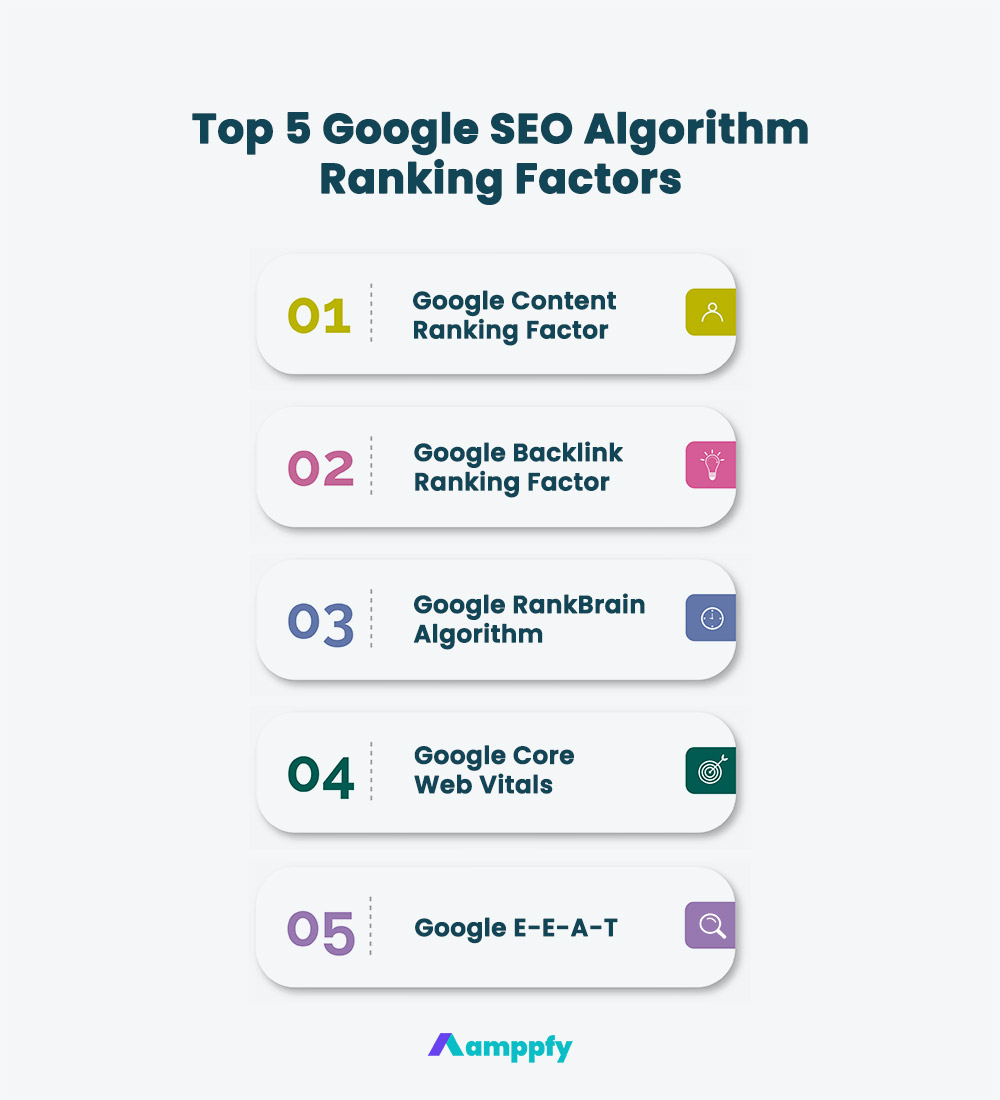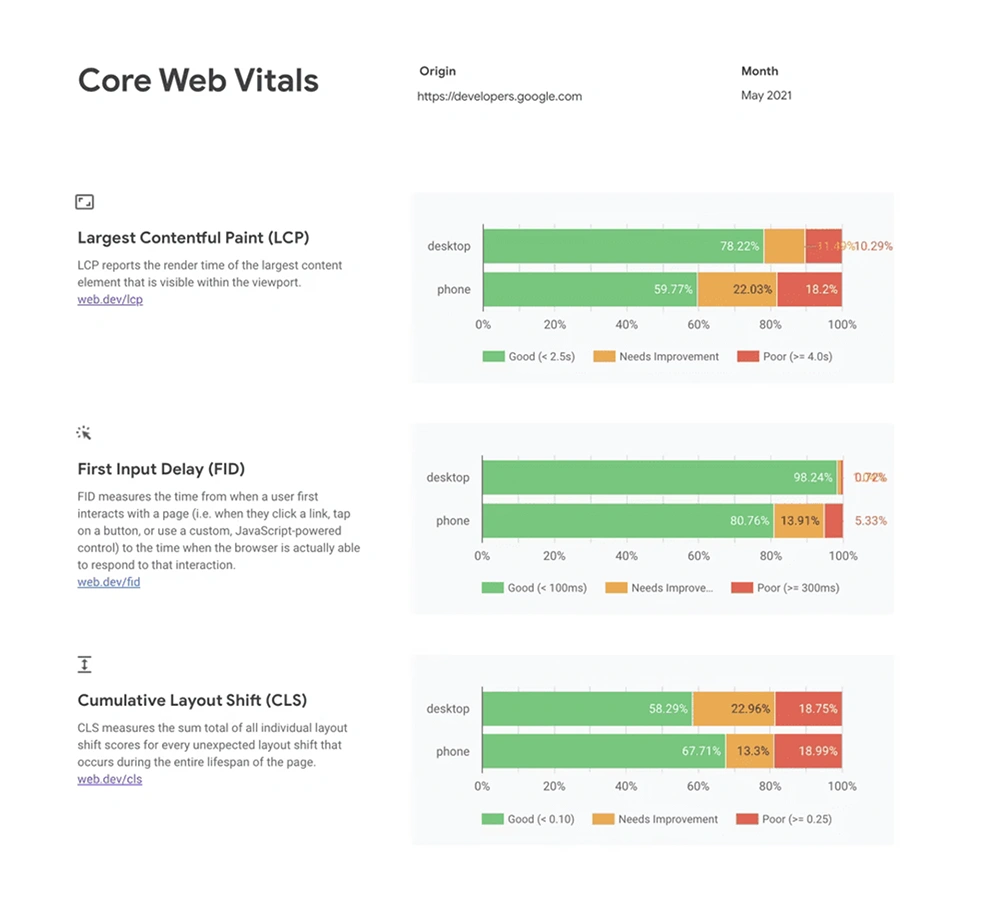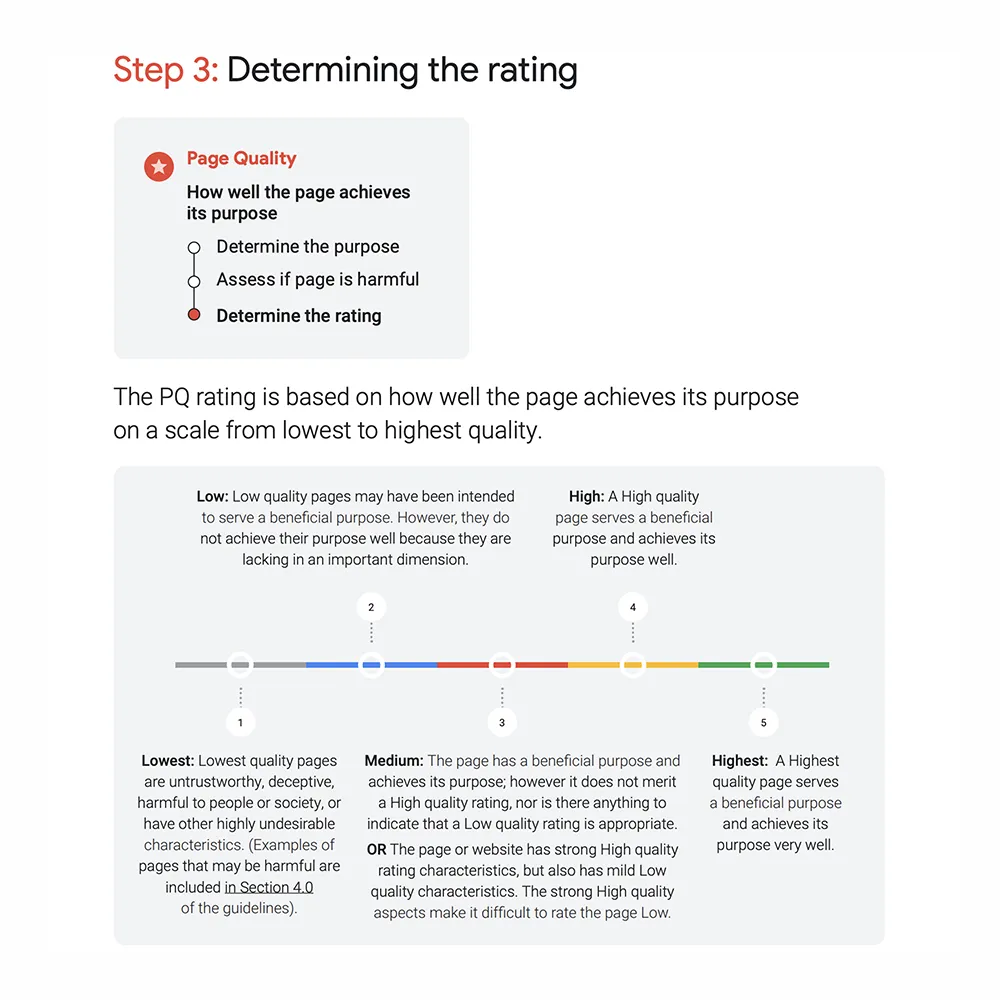Google is a dominating force in the commercial search engine market. According to Statista, it tops the chart with a leading 85% of desktop search market share. Google’s goal is to improve the accuracy of search results, reduce spam content, and better understand the user intent behind search terms.
Google’s Search Engine Evolution
Over the last few decades, Google has meticulously evolved and improved the online search experience. One of the many developments Google makes to deliver more accurate and intuitive results is improving its search algorithms. These algorithms contain thousands of signals to help Google best match searched keywords to the intended meaning behind them.
Watch Google’s Video Explaining the Evolution of Search
What is SEO Algorithm?
There are trillions of websites floating on the internet. When someone conducts a search in Google, search algorithms filter out irrelevant information and rank the best-matched webpage to the specific query.
How Does Google SEO Algorithm Work
Think of Google’s search algorithms as formulas that narrow down precisely what someone is looking for online. Google releases updates to its search algorithms periodically to improve the interpretation of user queries to best match them with answers.
Google SEO Algorithm Emphasizes the User Intent Behind Search
Google algorithms derive from meticulous calibrations based on extensive user behavior analysis. The goal is to depict the meaning behind the searched terms accurately. By understanding how Google emphasizes the intent behind a keyword search, you can improve brand awareness, visibility, and reach new markets through strategic SEO (Search Engine Optimization) implementation.
How Google SEO Algorithm Affects a Website and its Online Visibility
Digital marketers closely follow major Google algorithm updates to better create, serve, and market website content. Google algorithms affect a website’s keyword ranking in search results, and these algorithms aim to make the search experience better for everyone.
What are the Top Ranking Factors of Google SEO Algorithm?
There are thousands of different ranking factors that Google uses to determine how a website should rank compared to another. The top-ranking factors represent the core fundamentals of properly executed SEO, which is the key to success in digital marketing. Although Google has not officially confirmed ranking signals, the major ranking factors Google revealed publicly are essential for every website to adopt.
Here are the top Google algorithm ranking factors you should know.
Top 5 Google SEO Algorithm Ranking Factors

#1. Google SEO Algorithm Content Ranking Factor
SEO content marketing plays a significant role in optimizing Google’s algorithm. Content marketing builds brand awareness and improves website ranking with original and authoritative content that offers value. Try adding different types of creative assets to a website to keep visitors engaged.
Here are five examples of creative assets.
Top 5 Creative Assets to Keep Visitors Engaged Through Content Marketing
- Videos
- Infographics
- e-Books
- White Papers
- Blog Posts
Leverage Content Marketing to Increase Website Keyword Ranking
Optimize content for search by incorporating specific keywords relevant to your business vertical to increase the website’s visibility and organic keyword ranking. Leveraging content marketing to increase brand exposure while delivering value helps potential prospects engage with your content and eventually convert into customers.
#2. Google SEO Algorithm Backlink Ranking Factor
Backlinks are hyperlinks that link back to your website. They are one of the top-ranking factors of SEO marketing. Google sees backlinks as a vote of confidence that the referenced webpage is authoritative.
Advantages of Internal and External Backlinks
Backlinks can be internal or external; both are critical deciding factors for Google to determine website keyword ranking.
Internal Backlinks Improve Visitor Journey
Internal backlinks connect webpages within the same website. They allow Google and visitors to view relevant, related pages and provide a better flow to the visitor journey. Aim to create internal backlinks from common themed webpages, products, or services to increase the number of pageviews within one visitor session.
Gaining more pageviews improves the opportunity for a call-to-action conversion, such as a sale, a demo request, an email sign-up, etc. Content like interactive visuals and instructional videos are also great resources for internal backlinking.
External Backlinks Increase Website Authority
External backlinks are hyperlinks from other relevant and authoritative websites. The proper “white hat” SEO (or Google-approved SEO methods) for external backlinks should be in the form of a website’s name with a link to its webpage. These backlinks should come organically, meaning genuine referrals from authoritative websites relevant to your industry and target market.
A Word of Caution: Do Not Abuse or Purchase External Backlinks
Gimmicks of creating external links from irrelevant or spammy websites are counterintuitive and will be penalized by Google. Do not abuse the system of external backlinks to boost referrals artificially, including purchasing or receiving low-quality or irrelevant backlinks that have no relationship to the industry or vertical of your business.
Refer to our complete checklist on how to avoid Google algorithm penalties.
#3. Google RankBrain Algorithm
Google RankBrain algorithm is the new age of AI/ML (Artificial Intelligence and Machine Learning) for understanding the intent behind search keywords. Google accurately predicts what a user is explicitly searching for by using linguistics to better understand search intent.
Google RankBrain Focuses on User Intent
As Google learns the meaning behind a search term over time, you can capitalize on product or service-related search terms. The more detail a search phrase contains, the better understanding Google has of the user intent behind the searched words.
Learn more about Google RankBrain algorithm.
Leverage Long-Tail Keywords for Google RankBrain
For example, consider adding long-tail keywords (keyword-containing search phrases) in the title, product descriptions, or service solution pages. Long-tail keywords improve the conversion rate of a visitor taking action, such as completing a purchase or requesting a quote for service. The more descriptive the product or service pages are with supportive content, the better your keyword rankings will become for high-intent search queries.
Learn more about SEO keyword research strategies, and try keyword research for free.
#4. Google Core Web Vitals
Page experience has become a critical SEO factor for Google search as it intuitively ranks webpages based on user experience. Google Core Web Vital update covers three main aspects and sets a general rule-of-thumb guideline for how a webpage should properly load on a browser.
Google Core Web Vital data can be found in your Google Search Console account. Below is a reference sourced from Google’s Chrome Developer Content Library.

Top 3 Guidelines of Google Core Web Vitals
Guideline 1: Largest Contentful Paint
Largest Contentful Paint (yes, that’s how Google named it) is the time it takes for a webpage’s main content to load. Largest Contentful Paint describes the ideal webpage loading speed should be less than 2.5 seconds. The faster a webpage loads, the better user experience the website provides.
Guideline 2: First Input Delay
First Input Delay is the time it takes for a webpage to become interactive. Related to webpage loading speed, First Input Delay measures how soon a visitor can interact with a website element, such as by clicking links, buttons, or inputting a keystroke.
Guideline 3: Cumulative Layout Shift
Cumulative Layout Shift is the amount of unexpected visual layout shift of webpage content. Cumulative Layout Shift talks about any block of content or graphic element, such as image placement that incorrectly shifts the webpage layout as the page loads. This layout error is disruptive to the overall user experience.
#5 Google E-E-A-T
Google E-E-A-T stands for Experience, Expertise, Authoritativeness, and Trustworthiness. E-E-A-T is an important concept for SEO marketing because Google wants to ensure websites and webpages that rank well in search results are credible and trustworthy sources. Business websites need to ensure users get accurate and reliable information.
Below is a reference from Google’s Search Quality Rater Guidelines on how Google determines the quality of a webpage.

Top 4 Tips for Businesses to Improve E-E-A-T
- Providing high-quality content: Creating well-written, informative, and accurate content. It also means providing content relevant to the target audience, solving a problem, or providing value.
- Building authority: Creating a strong social media presence, publishing guest posts on other high-quality websites, and building backlinks to your website from other reputable sources.
- Demonstrating expertise: Including author bios on your website, listing qualifications, experiences, and publishing valid case studies and testimonials.
- Building trust: Using security certificates, displaying customer reviews, and being transparent about business practices.

